Gadi Lachman is CEO of TriNetX of Cambridge, MA.

Tell me about yourself and the company.
I was born in Israel. I served in the Special Forces there. Everybody starts as a soldier and a few become officers. I was lucky to become one.
I studied accounting and law. I turned around my father’s business, which was educational services. He was a big entrepreneur there. Then I came to the United States. I did my MBA at Harvard and was a Baker Scholar. I worked at Lehman Brothers, and after that, a lot of technology IT companies, always in the healthcare space. A lot of healthcare IT, all either in extreme build-out mode and extreme growth or turnaround situations. I live in the Boston area with my wife, my three kids, and my dog.
How is technology changing the clinical trials enrollment process?
It’s technology, it’s data, and it’s a huge desire for change. All good people, all trying to develop therapies for the benefit of patients. Structural problems in that industry make it very hard to be successful, to develop good therapies in a short timeframe and at an OK cost, not at a cost that’s skyrocketing and goes up and up.
The main structural impediment to the success of this industry is the fact that each part of that industry tries to do the best job themselves, but the collaboration between the different industry players has been minimal and tactical. You have hospitals and institutions that have a lot of data, but it has been hard to use that data in an efficient way in the drug development process. You have players that need that information, but develop very tactical relationships with the healthcare organizations on the side.
We are a Novartis vision and a Novartis idea. They wanted to disrupt the clinical trial design space. Some of the reasons that clinical trials fail are good reasons. Some drugs and therapies should never be developed. They’re just not effective. It’s OK and good for those things to fail as soon as possible so people can move on quickly.
But a lot of times, the development of good drugs and good therapies is failing for the wrong reasons. It’s failing because of bad protocol design and bad trial design because the wrong sites are being selected.
We were created to solve the bad reasons for which some of those processes are failing. Novartis’s vision was, and our vision is, that a solution to big problems has to come from collaboration at the strategic level that did not exist before we came. Hence, what we do and what we’re trying to solve and disrupt. We’re building a global network of collaboration between pharma companies and companies that serve them, such as the CROs and HCOs. When I say HCOs — healthcare organizations — those are mega-hospitals, those are big institutions that see a lot of patients and have access to millions and millions of patient records.
The idea was that the only way to solve the big problem is to bring all those players to the table strategically. We are almost a club. Everybody brings different things to that club and gets different points of value from the club. Only by doing something like that, we believe, can you tackle a really big problem.
What can a large health system do differently in being in a network with other players?
By joining a network like that, you help support the process of designing an efficient protocol with real-world data, which is data that has been generated in real care settings as opposed to lab-generated data. You’re going to get more visibility to all the pharma members of that network, which means you’re going to get more study opportunities. You don’t have to take every opportunity pharma is giving you, but now you have the privilege, by joining the network, to see more opportunities in the therapeutic areas that are interesting to you.
A few of the sites that are members of our network got more than 50 trial opportunities from pharma and CROs that they would otherwise not get. Did they elect to participate in all those 50? Absolutely not. But now they can be more selective. They can decide to participate in trials that are interesting to them and try to give more hope to their patients any trials that they think they can be successful in delivering. As an HCO, you become part of a deal flow of studies that are coming your way.
Second, and I didn’t know this when we started the company, we’re living in the era of networks. Because everything is precision medicine, every cohort is getting smaller and smaller. Every therapy is becoming more and more directed at smaller subsets of the population. If you’re just one site — even if you have access to data of three or four or five million patients — it’s just not good enough. You start to look at the rare disease cohorts that you have and it’s not enough to get any insight.
Sites that join us get the privilege to be able to collaborate with other sites and share data, so if there is a rare disease that you have five patients, but you add another five sites to your network, now your researchers at the site can see data from 30 patients and that is very meaningful. That’s another reason they join us – not just to get more business from pharma and CROs, but so they can do a better job researching cohorts that they can’t do by themselves.
A third reason is that we are giving the sites very powerful tools to conduct clinical research. Before we came, their researchers needed to use suboptimal systems with very limited insight. We are giving them a user interface and the ability to query large amounts of data in a way that makes a lot of meaning for those that are interested at the HCO, not just to take care of and treat patients, but also to make progress with research and to move the boundary forward.
What do you think of organizations such as UCSF that are mining the wealth of data from their EHRs and other systems to look for new drug uses or correlations between genomics and disease states?
That’s exactly why we have TriNetX, absolutely. I wholeheartedly believe in that. Everybody who works for me and myself, we’ve all lost family members for therapies that were developed and brought to market a few years later. It’s also relevant for us as people that want to live longer and with high quality. A lot of the data to make a big impact is already available — it’s just no one was able to make it available.
I’ll give you a few numbers. We have more than 55 huge HCOs joining us that have together more than 80 million patients from all over the world. We have sites in the US, Germany, Hungary, Italy, the UK, Israel. We just recently signed Singapore. We’re building global collaboration and we’re giving it back to the researchers because they will come up with the questions and they will come up with the answers. They will find the correlations that no one even thought to ask and no one even thought made sense in the first place.
To do something like that, you’ve got to be able to harmonize tons of data all over the world. Demographics are important in our mission. There are populations from a demographic standpoint that are being under-represented in studies, and therefore the therapies that are being developed could potentially be less relevant for them. By building a global network that has all nationalities and all those different types of patients, you can start finding correlations between things, again, that you didn’t even think to ask.
I feel we hit the market at the right time. Maybe if we tried to do that 10 years ago, people would have been shy about that. Today, it’s the opposite. They are very savvy. They want to collaborate. They want to come together into a gigantic network. Not everybody is fortunate to be a part of the UC system, so you want to be part of something bigger. We are providing them with that opportunity and they get a ton of capabilities in return, exactly like that collaboration that you mentioned.
Will the FDA’s role change as study cohorts become virtual and study methods change?
Absolutely. I think if you look at the history of development of therapies from fighting bacteria to finding a way to live with HIV, things that used to take 50 years then take five and three and two years if everybody’s really in it together and doing things differently. I think the FDA and every regulatory body was doing extremely important work to protect the safety and balance all those different forces from that ecosystem. They’re starting to take a look at those technologies and those access points to data that we provide and figuring out that some things could be accelerated. Some trials could be conducted in real-world settings. There are alternative ways to understand the potential positive or negative impact of therapies and drugs and they are much more accelerated and they’re cheaper, potentially, on massive quantities of data.
If you think about it, there are so many trials being conducted today where nobody is calling them a trial. Every time an off-label drug is being recommended or prescribed, there are a lot of interested parties that would love to know the effectiveness of that off-label behavior, including those that are prescribing it. It just wasn’t able to be a reality a couple of years ago, but our vision is to make this a reality. To be able to take all this data and bring it back to the people that need to see that.
It’s not just the FDA, just to add another facet to your question. You have people and players that avoided research because they couldn’t afford to be part of that, to license those technologies, or they never had access to the data. But by making it available in such a broader way, you will bring more participants into this research community, and I think only good things will happen from that.
What can we learn from the disproportionate success of Israel-based entrepreneurs and startups?
One is a mindset. I did work on that when I did my MBA, not to say I’m an expert on the entrepreneurial success of Israel and why, but there are structural components to the success there. One, as an example, the lack of natural resources and the need on the military side to compete with enemies that are 10 times your size. If Israel will always have one tank and the nations surrounding it have 10, then it means that one Israeli tank needs to take out 10 tanks in order for Israel to prevail.
How do you trade effectiveness of 1 to 10? The answer is mostly technology. Israel was always forced to take technology to the cutting edge in order to survive. All those military technologies and a lot of that mindset, even if it’s not a military technology, transpires. You have a lot of entrepreneurs and a lot of new ideas.
Also in Israel, everybody has to serve in the military. You get that mindset. When you leave the Army, you still have that mindset. You are OK daring and trying to do new things and trying to get that 1 to 10 ratio that you were taught in the military that that’s what you need to have in order to survive.
Having your back against the wall, the need to be an innovator or die, and the access you had to like-minded people and cutting-edge technology — you can then bring it back and try to do other things with that.
Do you have any final thoughts?
I would love all the players to always, in the end, think of the patient. That should drive every decision they make, more than financial decisions, more than “this is my data and I’m not letting anyone touch it,” more than “I’ll be the biggest I can be, but maybe I don’t need to collaborate with anyone else.” If there’s something I pray for, it’s that alongside corporate decisions, P&L decisions, financial decisions, and this and that, people always go back to that inner soul that they have and that helps drive some of the big decisions as well. I think it will help a lot.
Comments Off on HIStalk Interviews Gadi Lachman, CEO, TriNetX



















































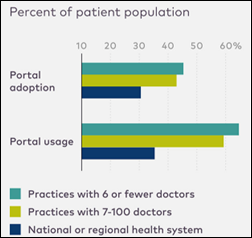

















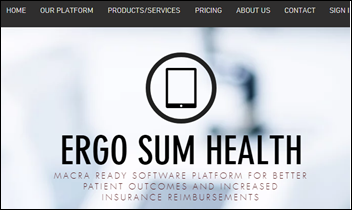



























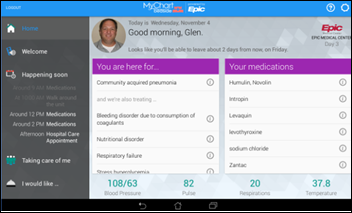









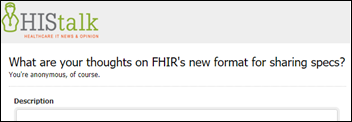






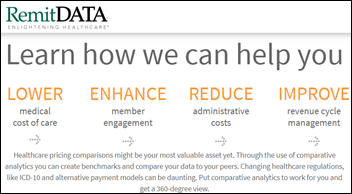






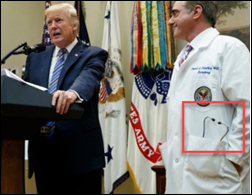


I can't get past the helmets and safety vests. On everyone. Including the model patient. What, are they expecting the…